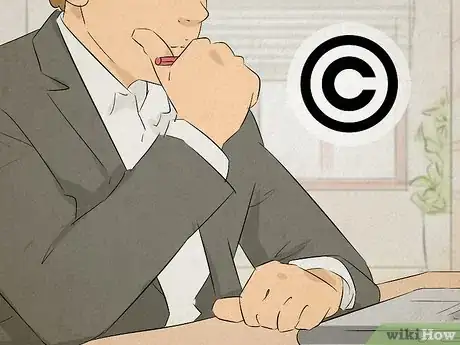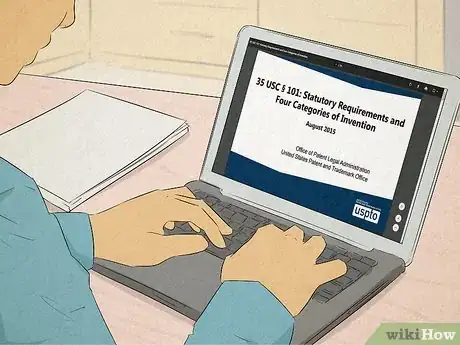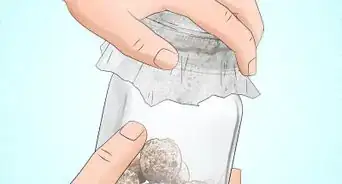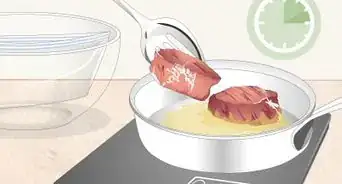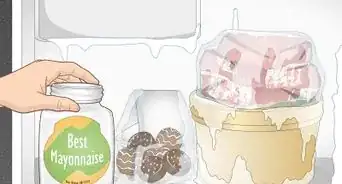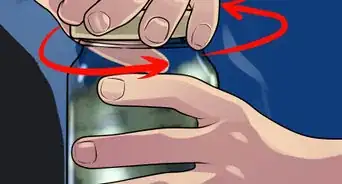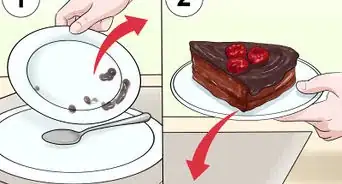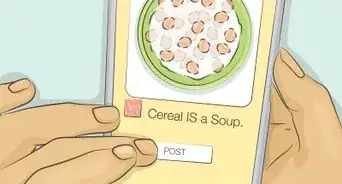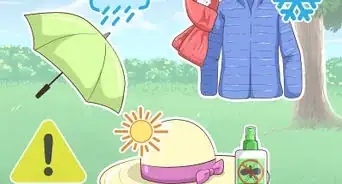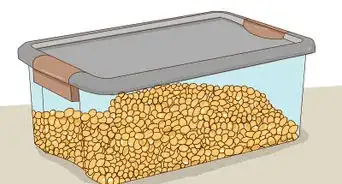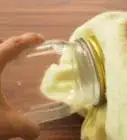This article was co-authored by Jeremy Rutman, PhD. Dr. Jeremy Rutman is a Patent Attorney and the CEO and Founder of RutmanIP, a boutique intellectual property firm in Israel. With over 15 years of experience, Dr. Rutman specializes in drafting patent applications in various fields such as physics, computer hardware and software, electrical engineering, mechanical engineering, green energy, and software. He holds a BS degree in Physics from Harvard University, where he graduated cum laude, and an MS and Ph.D. in Physics from the Technion - Israel Institute of Technology. Dr. Rutman has extensive experience turning start-up ideas into strategic assets and has published his work in many leading professional journals in the field.
This article has been viewed 26,045 times.
Now that you finally have all your recipes gathered together in one place, and you have mom's or grandma's recipe collection together, you want to protect it. Probably, you are thinking about something more than just protecting the written papers or cards in a box or file. Maybe you have considered patenting or copyrighting your individual recipes, or even your whole collection before you publish it. There are legal ways to protect your property in just a few steps.
Steps
Considering Copyright Your Recipe
-
1Consider copyright for the easiest form of basic protection. This method is what may be the easiest and least expensive. What can, or cannot, be copyrighted? How would someone route through the maze of what can or must be done? Relax, it's easy.
- "Copyright law does not protect recipes that are mere listings of ingredients. Nor does it protect other mere listings of ingredients such as those found in formulas, compounds, or prescriptions. Copyright protection may, however, extend to substantial literary expression—a description, explanation, or illustration, for example—that accompanies a recipe or formula or to a combination of recipes, as in a cookbook. Only original works of authorship are protected by copyright. “Original” means that an author produced a work by his or her own intellectual effort instead of copying it from an existing work."
- Copyright only applies to the author of the original work and lawful successors. Your grandmother's recipe for her world famous Shrove Tuesday hash and pancake supper is copyrighted to her alone. It is possible to inherit copyright ownership, which is separate from ownership of a copy. See "Who Can Claim Copyright" [1]
- The name of the recipe, or collection, cannot be copyrighted. It may be protected by trademark law, if you follow the necessary rules in your country.
-
2Know that publication is not necessary for copyright protection.
- "Copyright protection is available for all unpublished works, regardless of the nationality or domicile of the author."[2]
- Copyright ownership is free and automatic from the moment a new work of creative authorship is first recorded in a tangible form. In the USA, registration of your copyright ownership is not necessary until you want to enforce it.
Advertisement -
3Make the choice about how you want to distribute and license your work. You can "self-copyright" any original work of your own, and you decide what rights, if any, people may have if they duplicate or distribute your work.
- You've seen the copyright symbol © followed by the phrase, "All Rights Reserved", or "Some Rights Reserved". You can do that yourself under Creative Commons, if you want to use that mechanism to license some or all of your rights. [3]
- Look at the bottom of this page, or any wiki page, you will see that phrase. Learn all about how to use your own custom copyright at Creative Commons. The best part about it is that it's fairly easy, it gives you all the coding and programming you need to put it on a website, or to write on a page, and it's free. It doesn't cost hundreds of dollars, nor involve a lawyer like a patent.
- Copyright notice (with the copyright symbol ©, date and owner's identification) has been completely optional in the USA since 1989, and only applies to "published works". All unpublished original works of creative authorship are automatically copyrighted for some number of years, depending upon where, when and other circumstances.
Considering Patenting Your Recipe
-
1Realize that, in order to apply patent law to your situation, your recipe and the corresponding disclosure in your patent application must meet certain criteria for US Patent protection. If you can answer yes to all these questions you might have a patentable invention, provided all other elements fall into place.[4]
- Is the invention patentable subject matter? Is it a process, machine, manufacture, or composition of material? For example, a recipe may result in a unique and new composition.
- Is the invention useful? Does it actually apply to something functional and have a specific, substantial and credible use? This is usually not an issue in recipe patents.
- Is the invention novel? Is it new? "Prior art" includes anything ever previously disclosed in any publication anywhere in the world, or used in public, as of your filing date. Some countries (such as the USA) grant the inventor a one-year grace period after his or her OWN use or sale in public, prior to the required filing, but most do not. If you sold or offered your goods with that recipe more than a year ago, it is legally no longer "new" for purpose of patenting.
- Is the invention non-obvious? Is it a variant of an existing invention, or combination of existing inventions, even though it's new? Would such variation or combination have been "obvious to one of ordinary skill in the relevant art", based upon all prior art?
-
2Read up on patents, defined under 35 USC § 101. It states, "Whoever invents or discovers any new and useful process, machine, manufacture, or composition of matter, or any new and useful improvement thereof, may obtain a patent therefor, subject to the conditions and requirements of this title." [5] You should hire an attorney and do a patent search to avoid wasting time and money on things that are clearly not new. Then you apply for the patent, and wait to have it approved or rejected, which is an expensive and long drawn out process.
- You may also want to consider a "design patent" if your recipes result in things having a new and unique shape or appearance.
Community Q&A
-
QuestionWould it be a wiser choice to register a recipe with trademarks or to patent it? How long do trademarks last vs. patents?
 Community AnswerThe wiser choice depends on why you want to do this. A trademark can only be used for "a symbol, name, word, logo, or design," so use that if you want to protect the name of your recipe. A patent could cover the recipe itself, but it must be demonstrably original (e.g. you would struggle to patent a new tomato soup), not an obvious advancement from what came before, and you must describe it in such a way that it can be reproduced (even if it would be illegal to then sell the resulting dish). Trademarks last for 10 years and can be renewed indefinitely; patents last for 20 years, but may lapse earlier if you don't pay a regular (at most, annual) fee.
Community AnswerThe wiser choice depends on why you want to do this. A trademark can only be used for "a symbol, name, word, logo, or design," so use that if you want to protect the name of your recipe. A patent could cover the recipe itself, but it must be demonstrably original (e.g. you would struggle to patent a new tomato soup), not an obvious advancement from what came before, and you must describe it in such a way that it can be reproduced (even if it would be illegal to then sell the resulting dish). Trademarks last for 10 years and can be renewed indefinitely; patents last for 20 years, but may lapse earlier if you don't pay a regular (at most, annual) fee.
References
- ↑ https://www.copyright.gov/circs/circ01.pdf
- ↑ https://www.copyright.gov/circs/circ01.pdf
- ↑ https://creativecommons.org/about/
- ↑ http://www.ipwatchdog.com/2012/02/10/the-law-of-recipes-are-recipes-patentable/id=22223/
- ↑ https://www.gpo.gov/fdsys/pkg/USCODE-2011-title35/pdf/USCODE-2011-title35-partII-chap10-sec101.pdf


